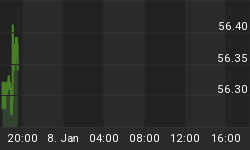When did we decide to extend August into September? Late-summer trends have persisted now well past Labor Day. Bonds are the biggest surprise, with the September selloff now 30bps deep in the 10yr, but volumes in equity-land seem more consistent with thin summer trading. I expected some decline in liquidity when the Volcker Rule passed and banks began to curtail proprietary trading, but surely the effect can't be so dramatic? June volume averaged something like 1.3bln shares; so far in September - admittedly including a half-day, but that day happened to be Employment Friday - the average is only 890mm shares and only one day has exceeded $1bln shares. And this, in a bullish move.
It seems hard to believe that those lucky 83% of the folks who want a full-time job and actually have one are taking extended vacations in this environment, but I guess that seems to be happening at least in government. Today's Initial Claims data showed a sharp improvement to 451k, versus expectations for 470k. That number is back to being closer to the bottom of the range than to the top... but, alas, it turns out that the confidence bands on it are a little wider than usual. It seems that nine states didn't get around to filing their actual Initial Claims figures because of the Labor Day holiday (ironic, ain't it?), so the BLS guessed at what those states might have reported. Actually, two of the states provided their own guesses, and since one of those is the big state of California we can confidently say that we cannot be confident in this number (which is a pity, since it was one of the only important releases this week).
Lazy bureaucrats.
While bonds continued to retreat and stocks continued to do well (+0.5%), I want to point out another development that is somewhat concerning but may have escaped notice in some quarters. Inflation swaps rallied today, some 5bps or so, less than the 7bps in TIPS breakevens. This isn't terribly concerning by itself. Most of the 30bp selloff in nominal yields so far has come from a rise in real yields rather than in implied inflation, so some catching up was due. But in Europe, inflation swaps have risen sharply of late. European 5y inflation swaps rose from 1.35% in late August to 1.60% on Monday. UK inflation swaps have also risen over this period; only about 10-15bps, but rising each day in September.
These aren't huge moves, but why are they happening at all? Investors on the Continent are suddenly buying inflation. Perhaps it is only short-covering of inflation? This is something to keep an eye on. 25bps doesn't worry me too much. Yet.
Late today, the money supply figures came out. As an inflation guy, I probably spend more time than is good for me looking over what is a boring weekly release. But, perhaps because I was looking at the European inflation markets and wondering why inflation expectations were suddenly bumping higher, I noticed that the 52-week rate of change of M2 rose above 3% for the first time this year. Now, a 3% rate of growth in money doesn't risk an inflationary conflagration as long as the velocity of money doesn't come roaring back as well...but that is, after all, what the Fed is trying to do, right? To stimulate lending and spending?
My models have core inflation bottoming basically sometime over the next 3-4 months. I think inflation expectations may already be bottoming, and if it isn't yet then the Fed's move soon towards QE2 ought to do it. I suppose we should joy this bonus week on the beach. The next couple of months might be pretty rough (I just hope that liquidity really does come back!)
















